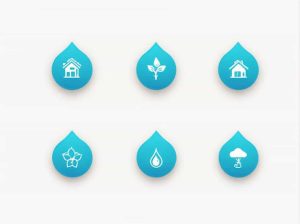Nitrogen is an essential nutrient for plants playing a key role in crop growth and food production. However when nitrogen levels become excessive due to industrial activities agriculture and fossil fuel combustion it can lead to severe environmental and health problems.
An overabundance of nitrogen disrupts ecosystems pollutes water bodies contributes to climate change and affects human health. This topic explores the significant problems associated with excess nitrogen their causes and potential solutions.
1. Water Pollution and Eutrophication
One of the biggest issues caused by excessive nitrogen is water pollution particularly through nitrate contamination and eutrophication.
A. Nitrate Contamination of Drinking Water
- Excess nitrogen from fertilizers seeps into groundwater increasing nitrate levels in drinking water.
- High nitrate concentrations pose a risk to human health especially for infants causing blue baby syndrome (methemoglobinemia).
- Long-term exposure to nitrates has been linked to thyroid disorders and certain cancers.
B. Eutrophication in Lakes Rivers and Oceans
- Nitrogen runoff into water bodies causes excessive growth of algae (algal blooms).
- When algae die and decompose they consume oxygen leading to dead zones where marine life cannot survive.
- A well-known example is the Gulf of Mexico Dead Zone caused by nitrogen runoff from agriculture.
2. Air Pollution and Greenhouse Gas Emissions
A. Formation of Nitrogen Oxides (NOx)
- Burning fossil fuels in vehicles power plants and industries releases nitrogen oxides (NOx) into the air.
- NOx contributes to smog acid rain and respiratory diseases.
B. Contribution to Climate Change
- Excess nitrogen increases emissions of nitrous oxide (N₂O) a powerful greenhouse gas.
- Nitrous oxide is 300 times more potent than carbon dioxide (CO₂) in trapping heat in the atmosphere.
- Agriculture especially fertilizer application and livestock waste is the largest source of N₂O emissions.
3. Soil Degradation and Reduced Agricultural Productivity
A. Soil Acidification
- Overuse of nitrogen-based fertilizers leads to soil acidification reducing soil fertility.
- Acidic soil affects plant growth microbial diversity and nutrient availability.
B. Nutrient Imbalance
- Excess nitrogen disrupts the natural nutrient balance leading to deficiencies in other important elements like calcium magnesium and potassium.
- This weakens plants making them more susceptible to diseases and pests.
C. Reduced Crop Quality
- High nitrogen levels increase nitrate accumulation in vegetables making them potentially harmful for human consumption.
- It also alters protein and sugar content affecting food quality and taste.
4. Impact on Biodiversity and Ecosystems
A. Harm to Aquatic Life
- Oxygen depletion caused by nitrogen pollution results in mass fish deaths and biodiversity loss.
- Certain toxic algal blooms produce harmful toxins which can poison marine animals and humans.
B. Disruption of Terrestrial Ecosystems
- Excess nitrogen alters the composition of forests grasslands and wetlands favoring fast-growing species while harming native plants.
- This leads to loss of plant diversity and imbalances in food chains.
5. Human Health Issues
A. Respiratory Diseases
- Nitrogen oxides contribute to air pollution increasing cases of asthma lung infections and other respiratory conditions.
- Fine particulate matter (PM2.5) formed from nitrogen emissions is linked to heart disease and premature deaths.
B. Toxic Algal Blooms and Food Contamination
- Shellfish and fish from nitrogen-polluted waters accumulate harmful toxins posing a risk to human health.
- Consuming contaminated seafood can cause neurological disorders liver damage and food poisoning.
Solutions to Reduce Excess Nitrogen
1. Sustainable Agriculture Practices
- Precision farming: Using nitrogen fertilizers efficiently to prevent overuse.
- Crop rotation and cover crops: Enhancing soil fertility naturally.
- Organic farming: Reducing reliance on synthetic fertilizers.
2. Improved Waste Management
- Treating livestock manure properly to prevent nitrogen runoff.
- Implementing wastewater treatment systems to remove excess nitrogen from sewage.
3. Reducing Fossil Fuel Emissions
- Transitioning to renewable energy sources like solar and wind power.
- Promoting public transportation and electric vehicles to reduce nitrogen oxide emissions.
4. Restoring Natural Ecosystems
- Protecting wetlands forests and grasslands which act as natural nitrogen filters.
- Encouraging reforestation and afforestation projects to absorb excess nitrogen.
While nitrogen is essential for life an overabundance in the environment causes severe pollution biodiversity loss climate change and health risks. Addressing this issue requires a combination of sustainable agriculture pollution control measures and global cooperation.
By adopting eco-friendly practices and enforcing stricter regulations we can mitigate the harmful effects of excess nitrogen and ensure a healthier environment for future generations.



